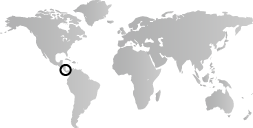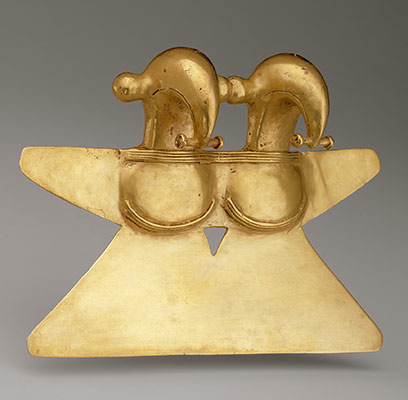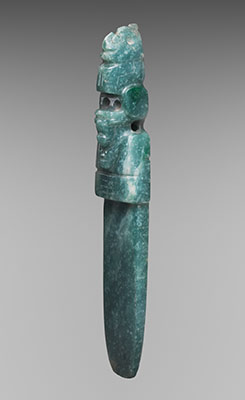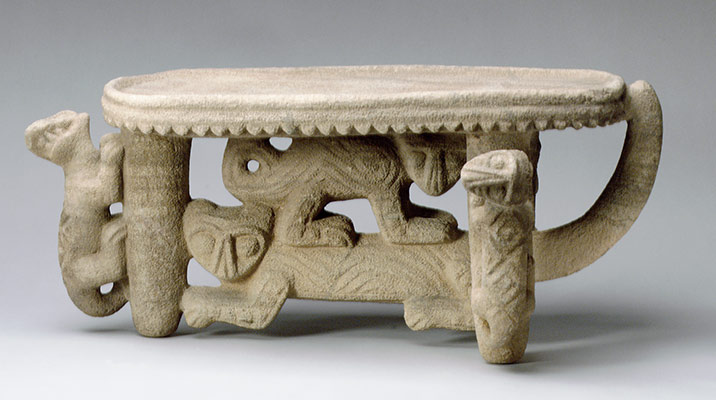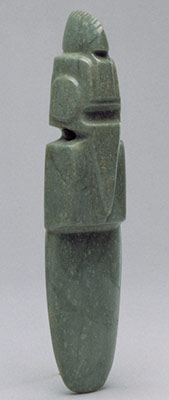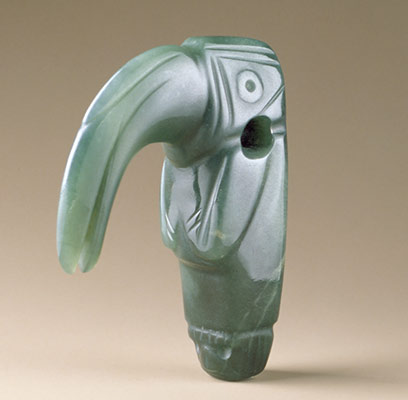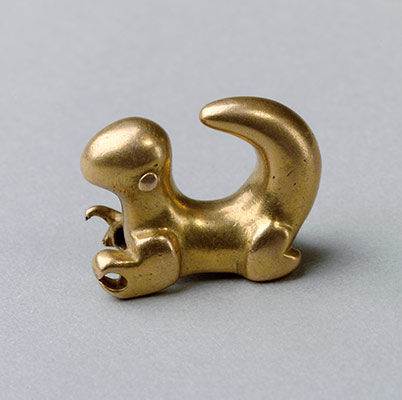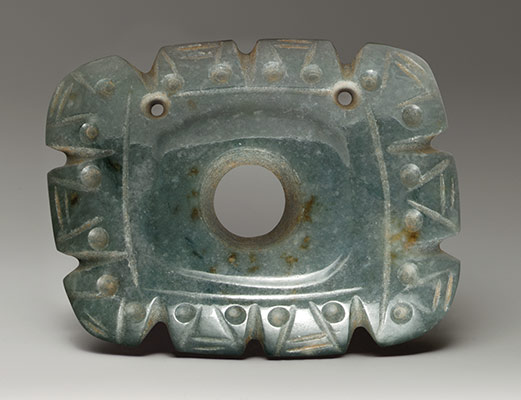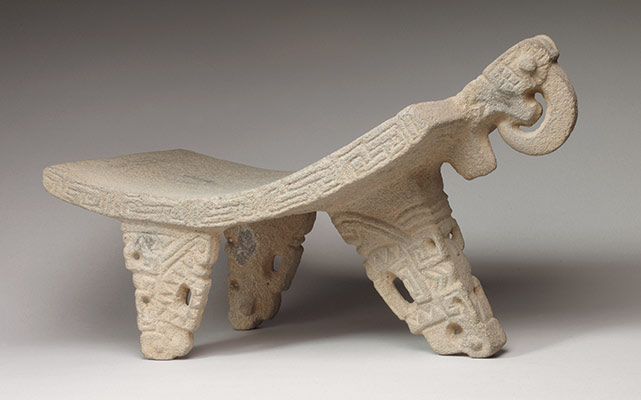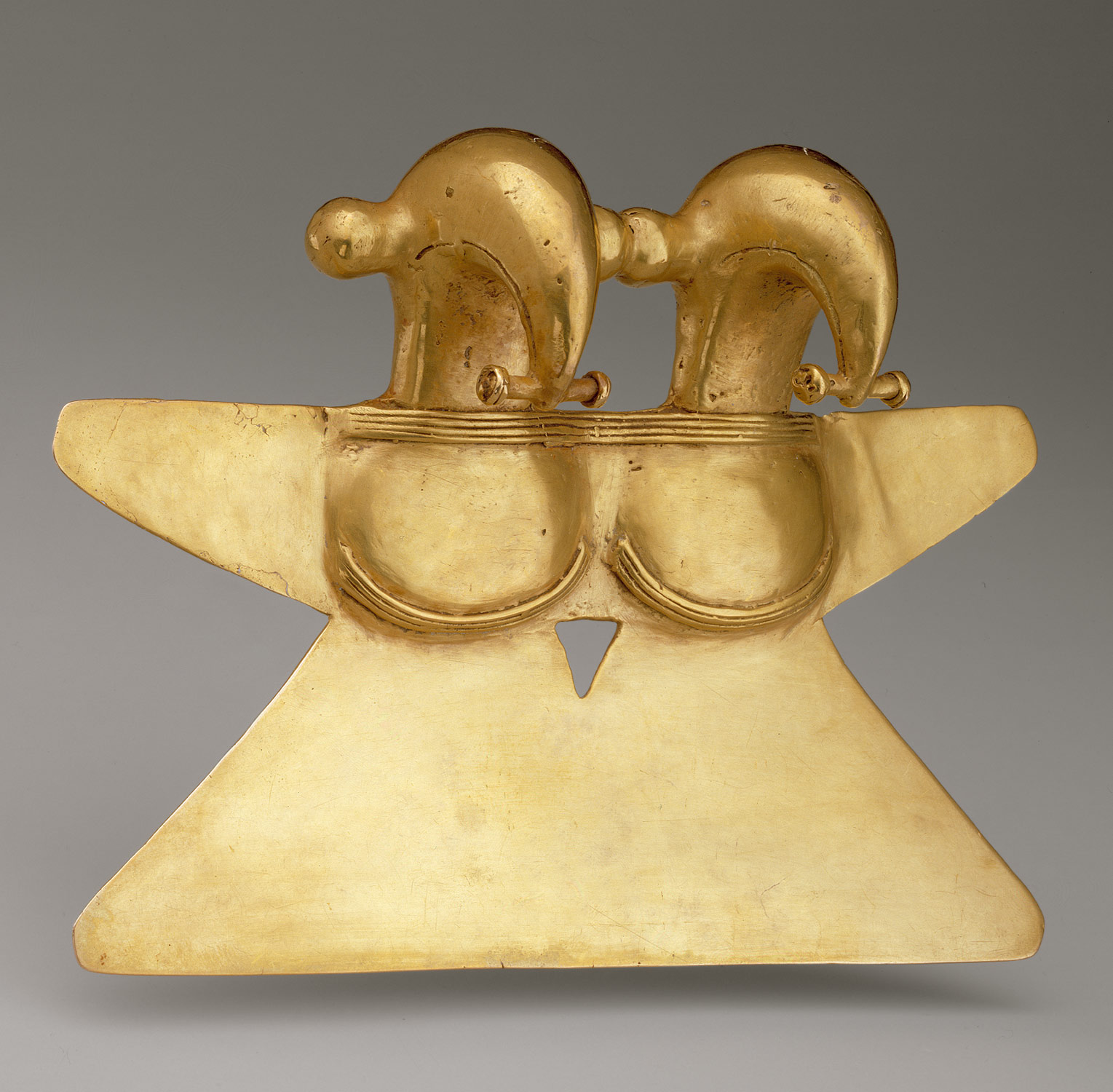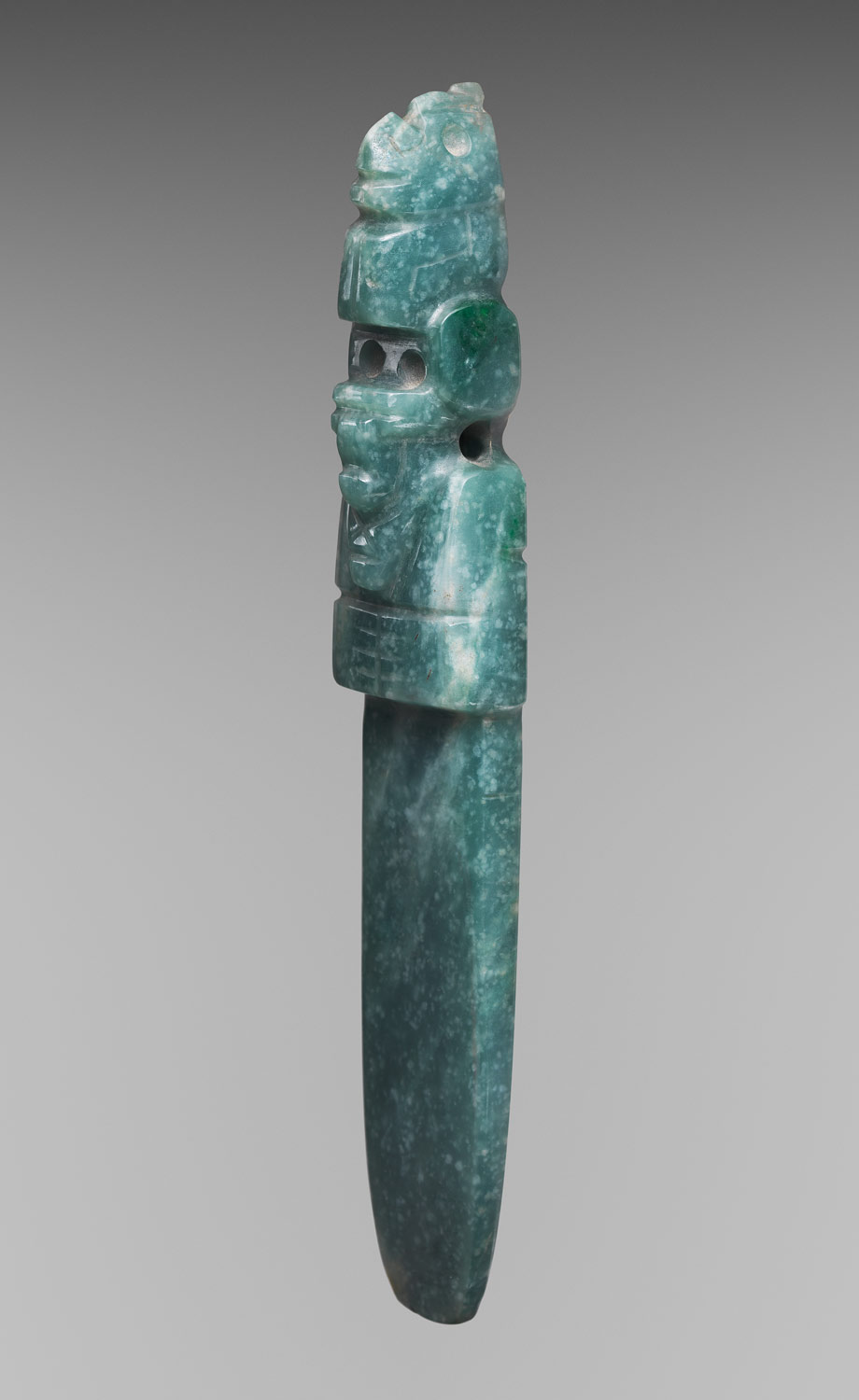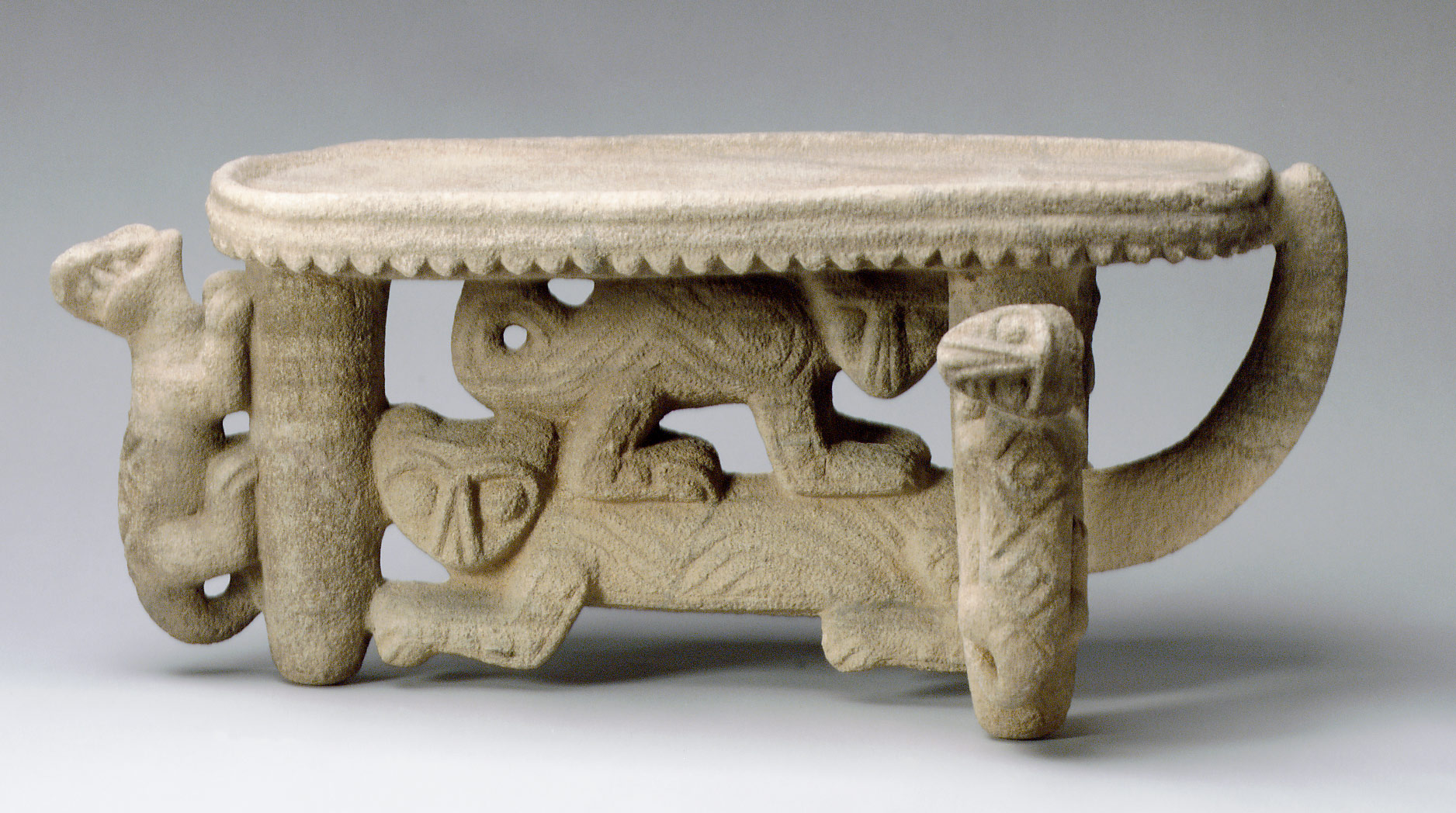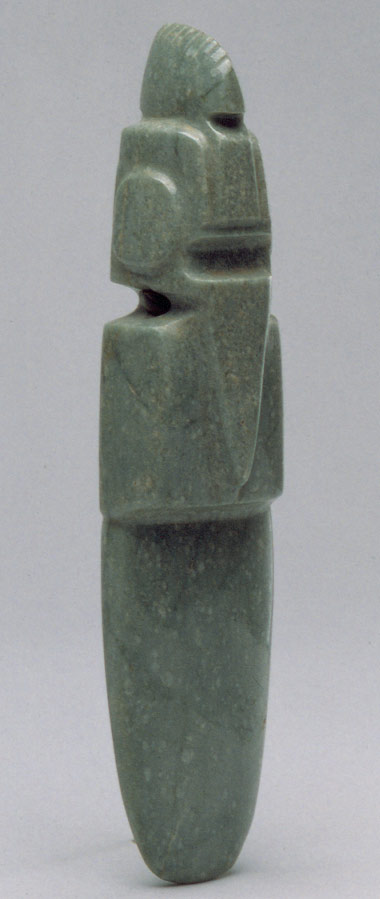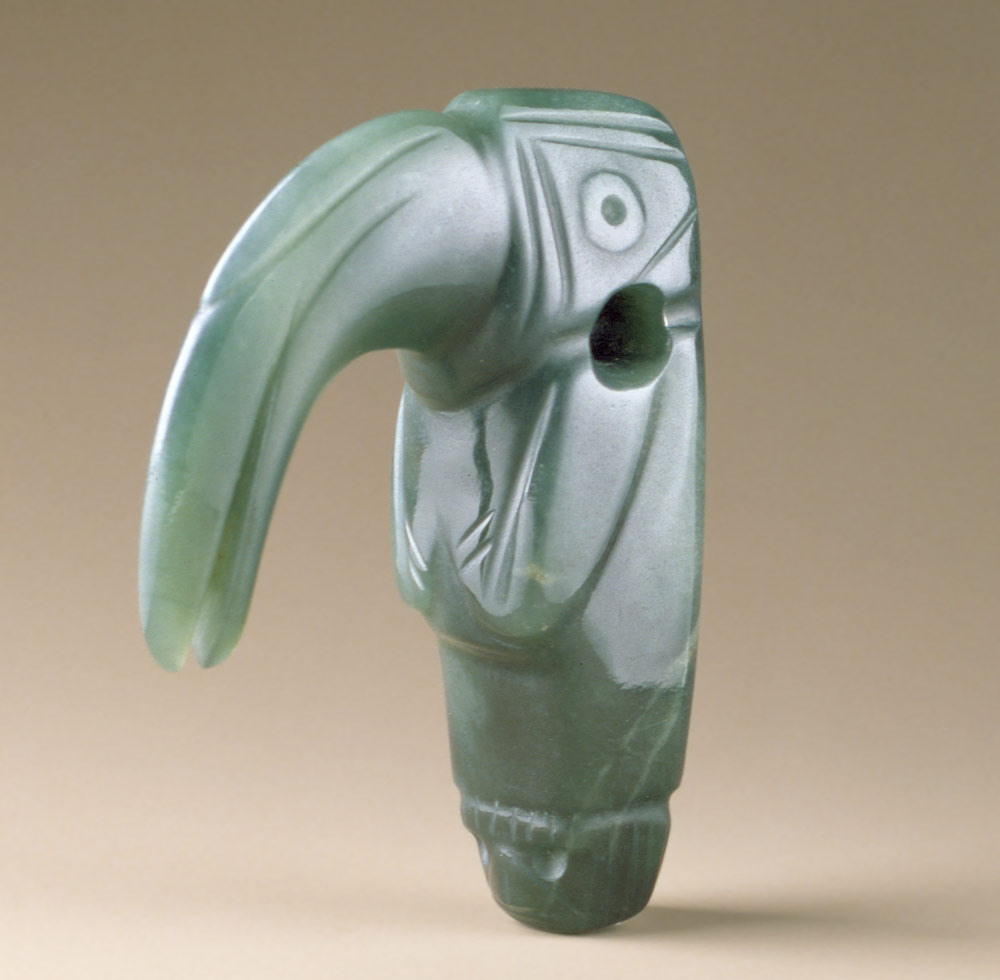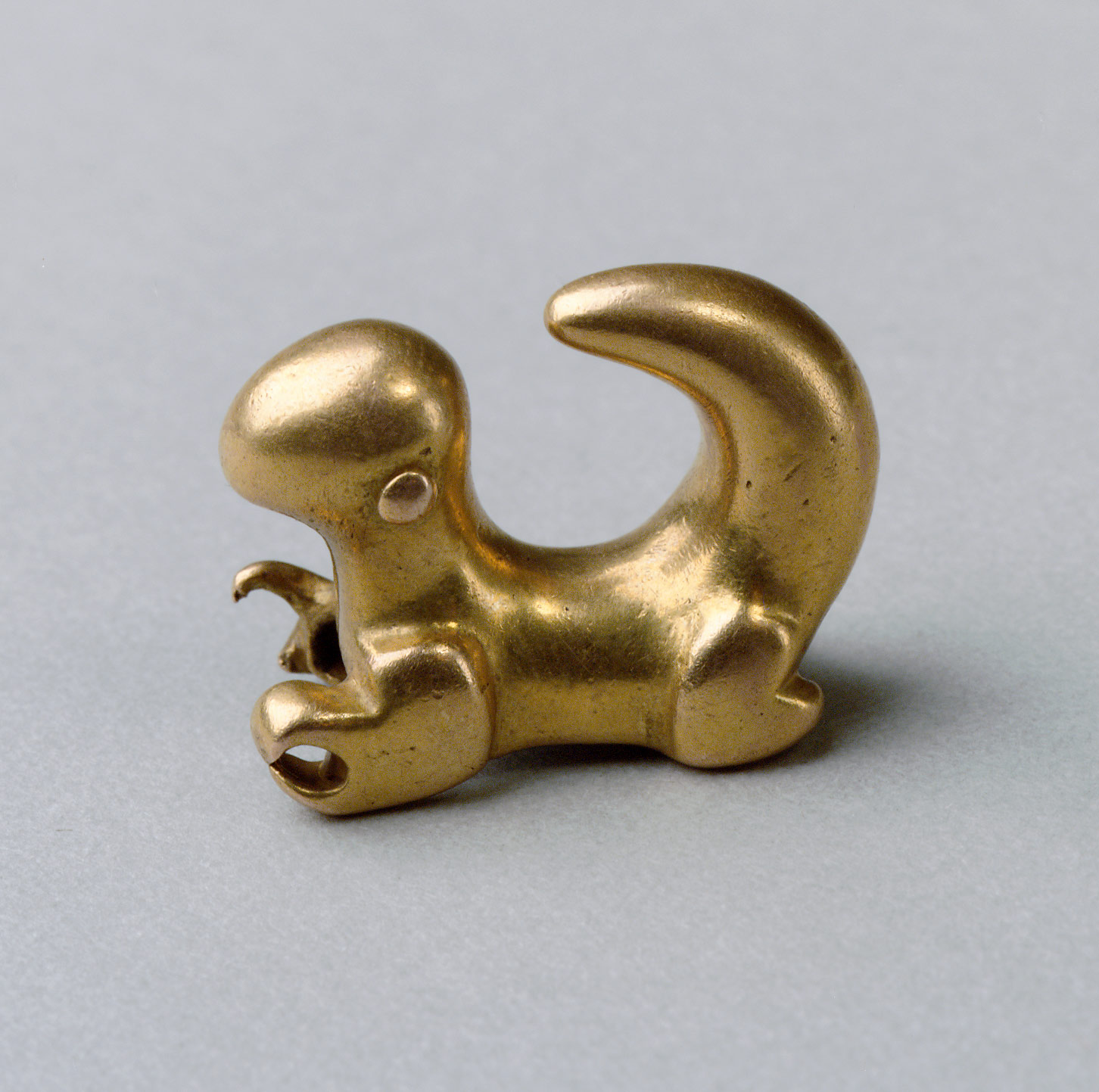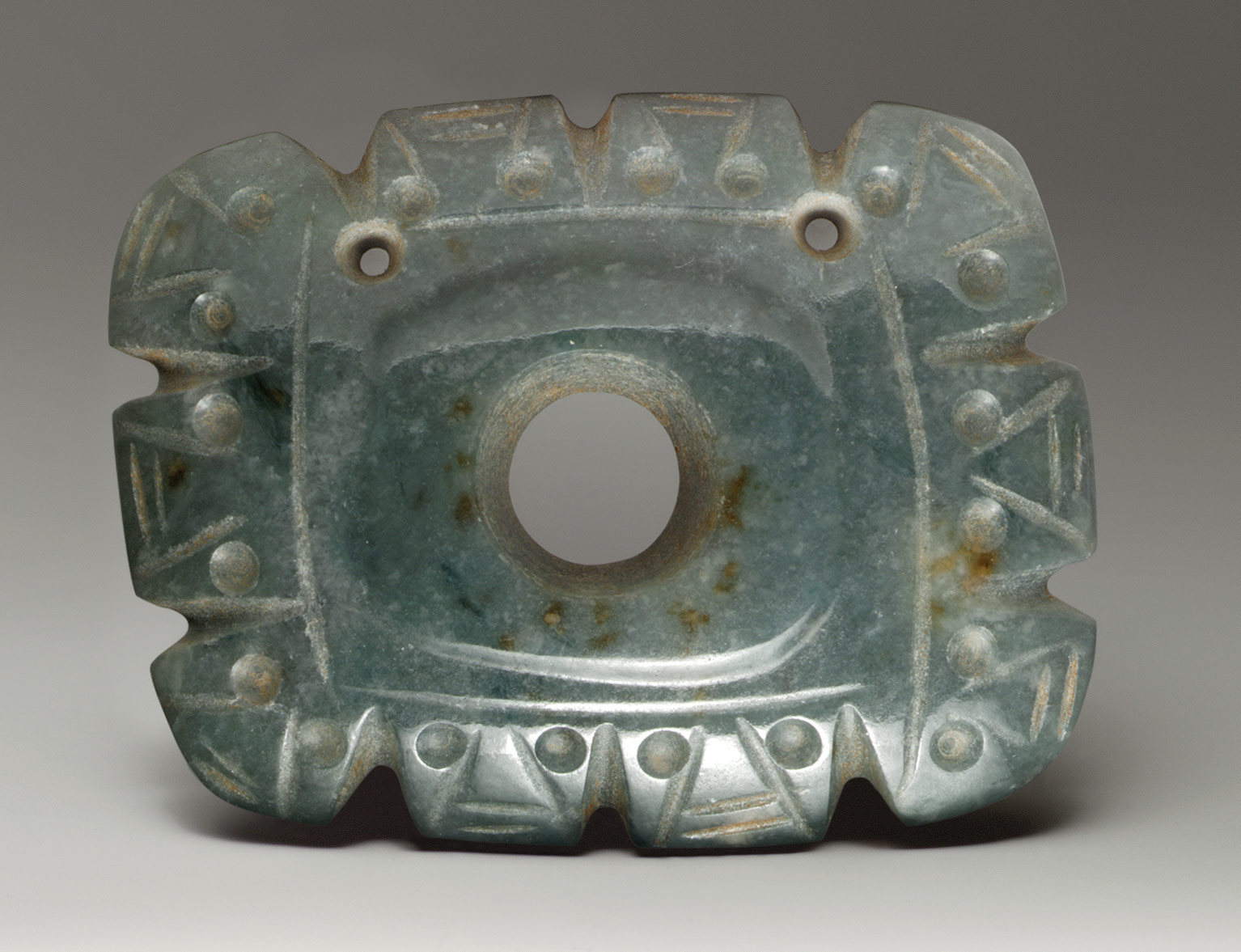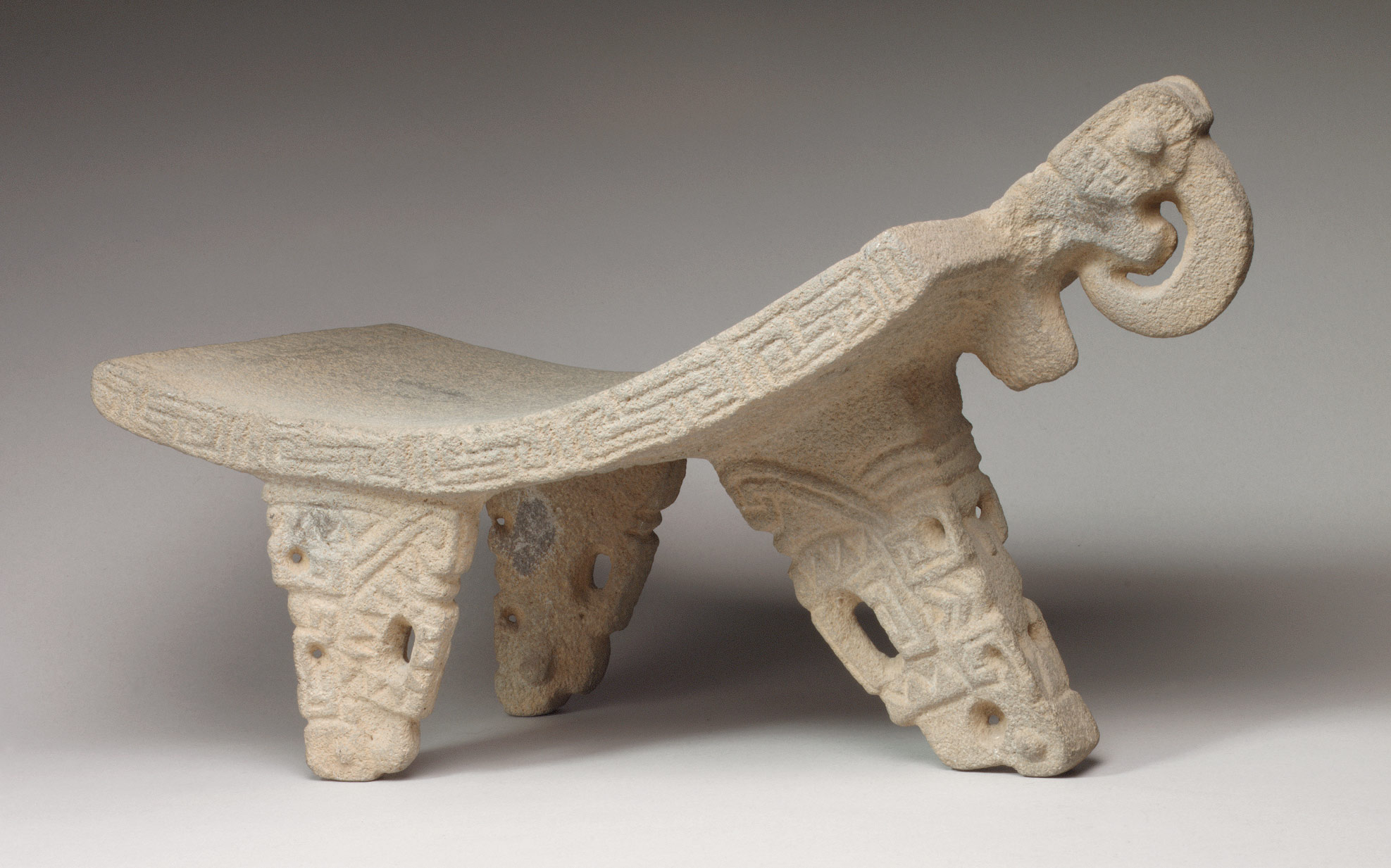Cultural development continues along patterns laid down in prior centuries. Jade and greenstone production increases considerably. Intricately carved metates, grinding tables for the processing of maize, were included in elite burials and may also have been used as thrones. Other forms of monumental sculpture occurred at the Panamanian site of Barriles, a sculptural tradition that influences southern Costa Rica. Metallurgy, focusing on the use of gold and copper, was introduced from northern Colombia perhaps as early as the third century. It moves steadily north thereafter.
Central America, 1–500 A.D.
Timeline
1 A.D.
125 A.D.
NORTHERN COSTA RICA
EASTERN COSTA RICA
SOUTHERN COSTA RICA
PANAMA
125 A.D.
250 A.D.
NORTHERN COSTA RICA
EASTERN COSTA RICA
SOUTHERN COSTA RICA
PANAMA
250 A.D.
375 A.D.
NORTHERN COSTA RICA
EASTERN COSTA RICA
SOUTHERN COSTA RICA
PANAMA
375 A.D.
500 A.D.
NORTHERN COSTA RICA
EASTERN COSTA RICA
SOUTHERN COSTA RICA
PANAMA
Overview
Key Events
-
ca. 1 A.D.
Well-made sculptural ceramics with incised details, known as Zoned Bichrome, are present throughout much of Greater Nicoya (southwestern Nicaragua/northwestern Costa Rica).
-
ca. 100 A.D.
Many objects of jade are placed as offerings in burials at the large cemetery of La Huacas on the Nicoya Peninsula of Costa Rica.
-
ca. 100 A.D.
Elaborate three-legged metates (grinding tables), carved from single blocks of stone, are used as ceremonial/funerary objects. Formal variation exists between the metates of Greater Nicoya and those of the Atlantic Watershed of eastern Costa Rica. In burials, the metatesare often placed together with carved stone mace heads and pendants of jade.
-
ca. 250 A.D.
An important personage in Costa Rica’s central highlands at Talamanca de Tibás dies and is laid to rest stretched out along the tops of three carved stone metates. The mortuary offerings include three mace heads and two large jade pendants, one an heirloom of Mexican manufacture of Olmec date.
-
ca. 300 A.D.
Mortuary offerings in burials in the Tonosí Valley of Panama’s Azuero Peninsula begin to include ceramic vessels with bright polychrome surfaces and personal ornaments of carved shell and bone.
-
ca. 300 A.D.
Rectangular houses with foundations of river cobbles are used at the site of Severo Ledesma in the eastern lowlands of Costa Rica. Burials and caches are placed beneath the floors.
-
ca. 400 A.D.
The Diquís region of southern Costa Rica’s Greater Chiriquí increases in population, and stone sculpture in the form of human figures is made.
-
ca. 400 A.D.
Barriles, a regional center in the Greater Chiriquí region of Panama, begins to flourish. Human images appear in stone sculpture.
-
ca. 450 A.D.
Pendants and other ornaments of gold—the technology of goldworking is considered to have come from Colombia to the south—are among the mortuary goods present at the community of El Indio on the Azuero Peninsula of central Panama.
-
ca. 450 A.D.
In the Diquís region of southern Costa Rica, stone spheres, some measuring up to seven feet in diameter, are carved and set on platforms of cobbles. Some are grouped in alignments, perhaps of astronomical significance, and/or placed in the vicinity of cemeteries. Their meaning is unknown.
Citation
“Central America, 1–500 A.D.” In Heilbrunn Timeline of Art History. New York: The Metropolitan Museum of Art, 2000–. http://www.metmuseum.org/toah/ht/?period=05®ion=cac (October 2000)
Related
Map
